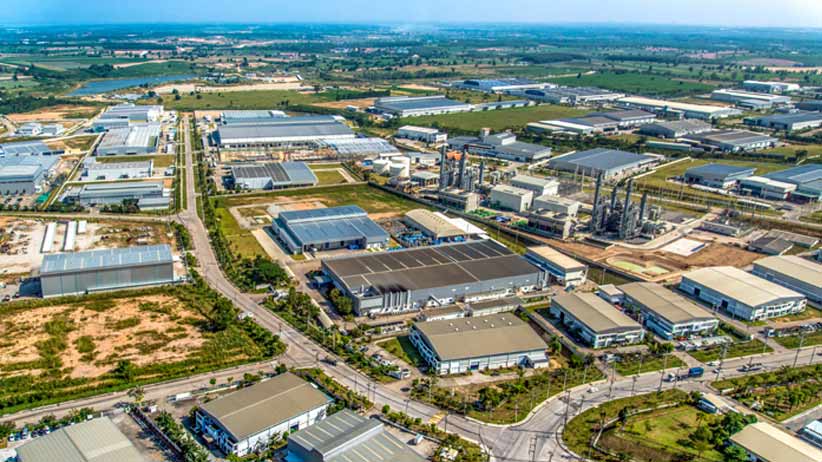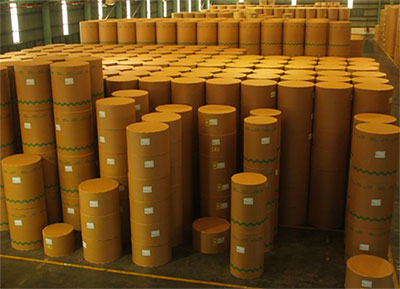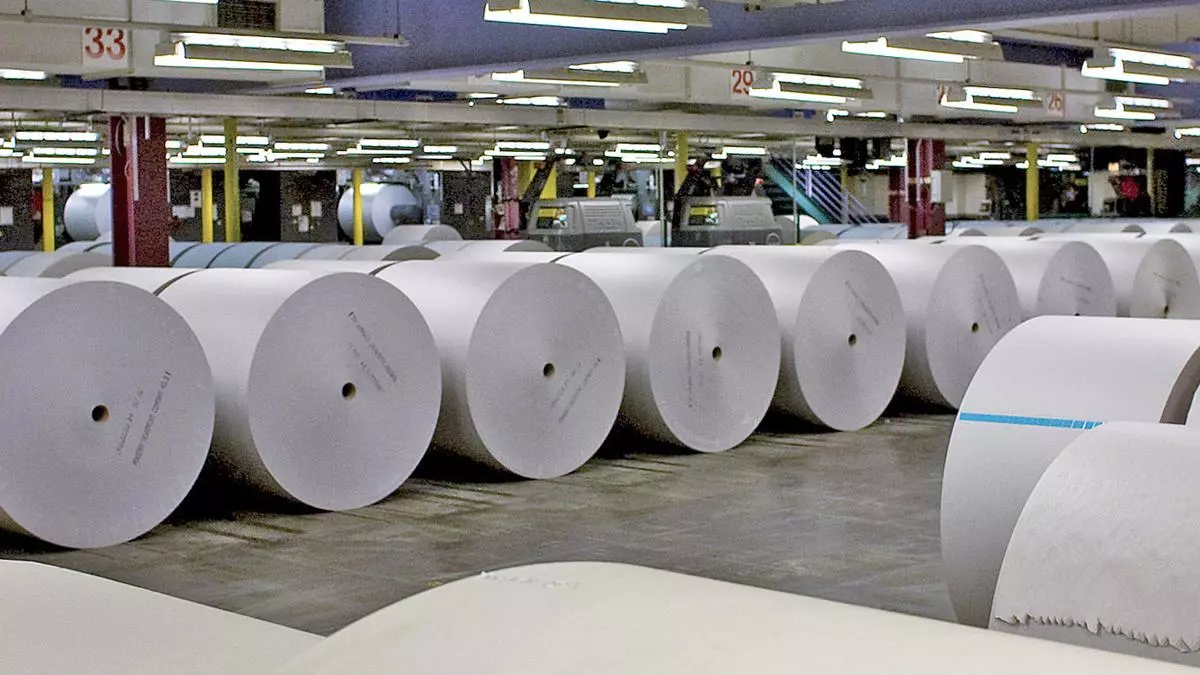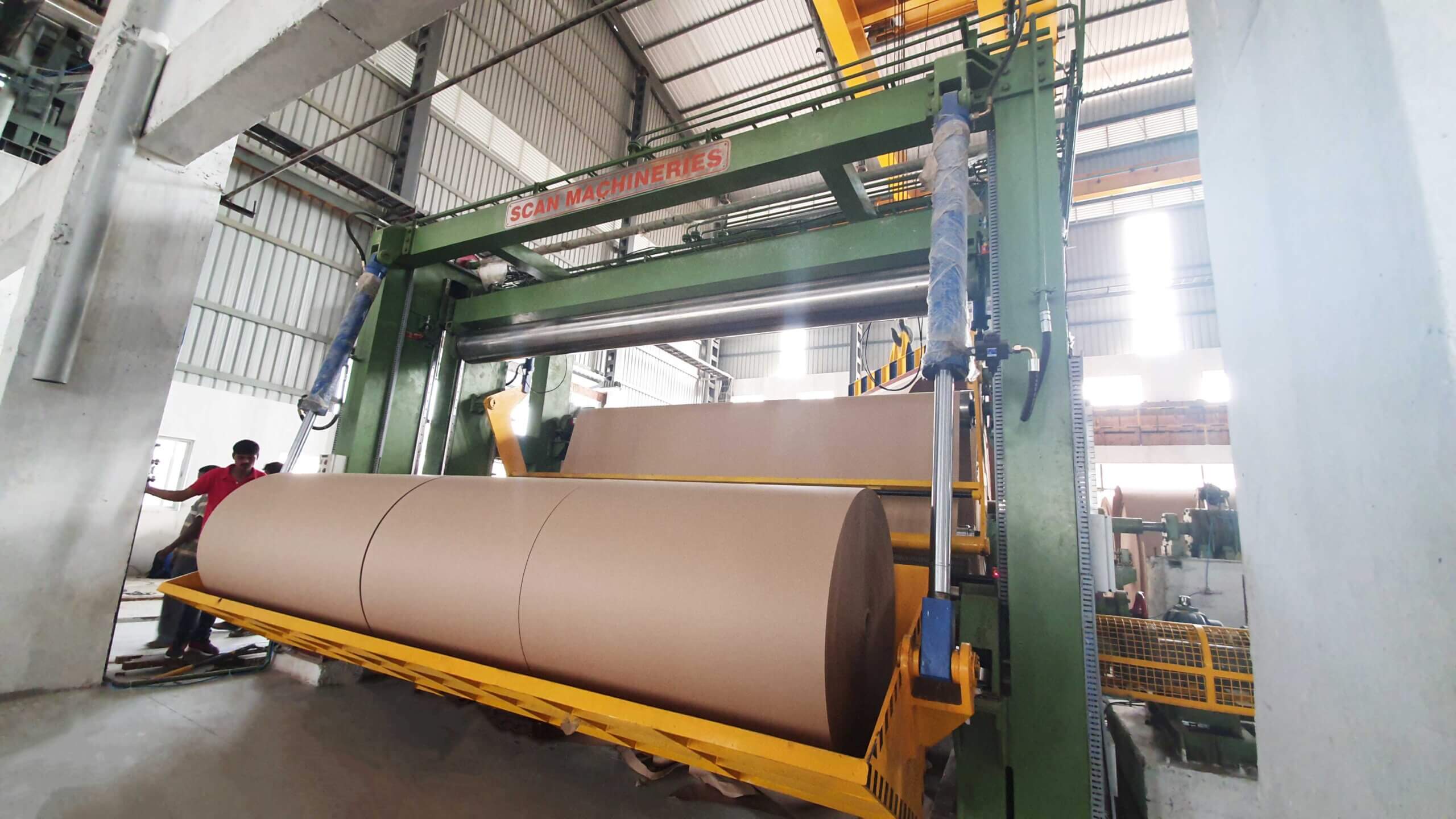The Asia pulp and paper industry is a vital sector focused on producing paper products from raw materials like wood, recycled paper, and agricultural residues .

Asia Pulp and Paper Industry , Asia Paper Market .
Asia Pulp and Paper Industry (APP) is one of the world’s largest producers of pulp, paper and packaging materials. Founded within the Shinar Mas Group, APP operates large manufacturing facilities across Indonesia and China. The company has a strong global presence and is known for its broad range of products, commitment to sustainability and innovative work in the pulp and paper industry.
APP began its journey in 1972 with the establishment of its first paper mill. Over the decades, it has grown into a multinational corporation, with operations spanning six continents. Through strategic acquisitions and the development of state-of-the-art facilities , APP has positioned itself as a leader in the industry.
Key Products and Services
APP caters to a variety of markets, offering :
Printing and Writing Paper: High-quality paper suitable for office use, educational institutions, and publishing houses. Tissue Products: Facial tissue, toilet paper, paper towels, etc., focusing on hygiene and comfort .
Packaging Solutions: APP manufactures durable and versatile packaging materials for industries such as food and beverage, electronics and consumer goods. Specialty Paper: Products designed for specific industrial applications, such as parchment and coated papers .
Stationery: An assortment of notepads, organizers, and other paper stationery. Manufacturing facility
The application runs many factories and documents at the forefront of technology, and has a major installation.
Indonesian: Indonesian app installation focuses on paste and paper production while complying with sustainable forest practice.
China: In China, applications have managed some of the largest integrated fabrics and paper factories, contributing to global production. Sustainability Commitments
One of APP’s most defining aspects is its commitment to sustainable development. The company has implemented several initiatives to reduce its environmental impact:
Forest Conservation Policy (FCP): Launched in 2013, this policy aims to protect and restore natural forests by ensuring that there is no deforestation in APP’s supply chain. Renewable Energy: APP integrates renewable energy into its operations to minimize carbon emissions.

Water Management: APP has implemented advanced water recycling technologies to significantly reduce water consumption in its production processes. Engagement with local communities: APP actively engages with local communities to promote sustainable development and forest conservation .
Issues and controversies Despite its achievements, APP has faced criticism and challenges, particularly regarding its environmental practices in the past. Allegations of deforestation and habitat destruction have forced the company to implement stricter sustainability measures and become more transparent .
Global influence and market presence
APP’s products are sold in more than 150 countries, making it a major player in the global paper industry. Its extensive supply chain and marketing strategies enable it to meet diverse customer demands across continents.
Innovations and Future Plans
To stay ahead in a competitive market, APP invests heavily in research and development. The company focuses on: Green products: developing biodegradable and recyclable paper products.
Digital solutions: using digital tools to optimize production and distribution. Capacity expansion: APP plans to expand its capacity, especially in India, to meet the growing demand for fabrics and packaging materials.
Visual Preview
APP’s activities will be complemented by visually effective branding and marketing. Below are some images that showcase the company’s products and sustainability efforts:
Production facility: A modern factory with state-of-the-art equipment.
Towels and packaging products: An example of APP’s versatile product range. Sustainable Forestry: Initiatives demonstrating forest restoration and conservation. Asia Pulp and Paper Industry .
Environmental Commitments
APP has faced scrutiny over its environmental practices in the past, particularly with regard to deforestation and land use disputes. In response, the company introduced the Forest Conservation Policy (FCP) in 2013. Key commitments of the FCP include:
Zero deforestation across the supply chain.
Protecting High Conservation Value Areas (HCV) and High Carbon Stock Areas (HCS). Implementation of sustainable planting management. Asia Pulp and Paper Industry .
Transparent report and third -party audits. Manufacturing Facilities and Sites
APP operates some of the largest and most modern pulp and paper mills in the world. Key facilities include:
Indah Kiat Pulp and Paper Mill (Indonesia): renowned for its integrated operations producing pulp, tissue products and packaging materials. Gold East Paper Mill (China): One of the world’s largest coated paper producers.
Hainan Jinhai Pulp & Paper Mill (China): Includes one of the world’s largest pulp production lines. Supply Chain and Distribution
APP’s extensive supply chain spans multiple continents, ensuring seamless product distribution around the world. Asia Pulp and Paper Industry . The company uses a combination of direct sales, distributors, and e-commerce platforms to reach customers. Paper Types and Applications
Coated Paper: Smooth surface and vibrant print quality make it used for magazines, brochures, catalogs, etc.
Uncoated Paper: Ideal for books, notepads, office stationery, providing a natural look and feel. Tissue paper: Lightweight and soft, it is suitable for hygiene products such as towels and tissues.
Kraft paper: Known for its strength and durability, it is used for packaging and industrial applications. Special paper: It contains textures for niche markets and waterproof paper, such as art and design.

Questions and opportunities
problem:
Environmental issues: constant questions related to derailment and carbon emissions. Competition in the market: Intensive rivals with other global players in the pasta and the paper industry. Asia Pulp and Paper Industry .
Regulatory requirements compliance: Strict environmental and commercial standard navigation. opportunity:
Ecological product: A growing demand for recycling and biodegradable paper products.
Digital transformation: Uses digital platforms to improve customer engagement and streamline operations. Emerging Markets: Expanding presence in Asia Pacific and Africa where paper consumption is growing. Asia Paper Market .
Sustainability Commitment
Zero Waste: APP strives to achieve zero waste by optimizing production processes and recycling by-products. Water Resources Management: Implementing water conservation methods and wastewater treatment systems. Asia Pulp and Paper Industry .
Renewable Energy: Investing in renewable energy sources such as biomass to reduce reliance on fossil fuels. Global impact
APP’s operations contribute significantly to the economies of Indonesia and China, providing employment opportunities and supporting local communities. However, the company is under scrutiny from environmental groups, which continually monitor its compliance with sustainability standards.
The pulp and paper industry forms the backbone of the global paper market, providing essential materials for a wide variety of applications, from printing and writing papers to packaging materials. The industry has grown significantly over the years to become one of the world’s largest consumers of wood and wood-based products. Asia Paper Market . It plays a vital role in the global economy, contributing to employment and technological advancements in manufacturing processes.
The Beginnings: The origins of paper production date back to ancient China around A.D. 105, where paper was first made from plant fibers. Asia Paper Market .The process eventually spread to the Middle East and Europe, where the first paper mills were established in the 11th century. Industrial Revolution: Mass production of paper began in the 19th century with the advent of the Industrial Revolution. The invention of the Fourdrinier machine in 1803 allowed paper to be produced in large rolls, making it cheaper and more accessible to the public.
Technological Advancements: In the 20th and 21st centuries, the introduction of new technologies, such as wood pulping, bleaching methods, and paper machines, revolutionized the industry, increasing production efficiency and reducing costs.
Major players in the pulp and paper industry
Major producers: The major companies in the global pulp and paper industry include international giants such as International Paper, UPM-Kymani , Store Enso and Sappi. These companies have a global presence and dominate the production of paper and paperboard products. Asia Paper Market .Raw Material Suppliers: The main raw materials used in the production of paper are wood, recycled paper and agricultural residues. Countries such as Canada, Russia, USA and Brazil are important suppliers of wood for pulp production.
Types of Paper and Pulp Products
Types of pulp:
Mechanical pulp: Made by crushing logs into a pulp, used for newsprint and lower-quality paper products.
Chemical pulp: Made by splitting wood with chemicals (such as the Kraft or sulfite process), chemical pulp is strong and used for higher-quality paper products. Asia Paper Market .Recycled Pulp : Asia Pulp and Paper Industry .Made from post-consumer paper products, recycled pulp is an environmentally friendly option for paper production.
Paper Products:
Newsprint: Thin, inexpensive paper used for newspapers. Printing and writing paper: High quality paper used for books, desktop paper, and other printed materials. Asia Paper Market .
Packaging paper: Used for wrapping materials such as wavy boxes , folding boxes , and paper bags . Soft Paper: Soft paper products used for hygiene purposes (toilet paper, napkins, etc.).
Paper pulp production process
The production process involves several stages, from the extraction of raw materials to the production of the final paper product.
Wood preparation: The process begins with the preparation of raw materials, such as logs, which are debarked and cut into small pieces for easier processing. Cooking: The chips are subjected to mechanical or chemical methods to break down the wood fibers into pulp. Asia Paper Market . Mechanical pulping uses grinding stones to crush the wood chips, whereas chemical pulping uses chemicals to dissolve the lignin and separate the fibers.
Bleaching: After pulping, the pulp is often bleached to remove any remaining color or impurities, resulting in a bright white paper product.
Papermaking: The pulp is then mixed with water to form a slurry. The fabric is spread onto a moving mesh belt where it is pressed to remove excess water, and heated rollers are then used to dry the paper. Asia Paper Market .Finishing: The paper then undergoes further processing such as coating, calendaring (smoothing) and cutting into sheets or rolls.
Environmental impact of the pulp and paper industry
Deforestation: The pulp and paper industry is a huge consumer of wood, and concerns over deforestation have created a need to introduce sustainable sourcing practices. Asia Paper Market .
Water use: The industry uses large amounts of water in the pulping, bleaching and papermaking processes. Asia Paper Market . This has raised concerns about water pollution and the depletion of freshwater resources.
Waste and emissions: Paper production generates waste in the form of chemicals, fibers, and other by-products. Additionally, emissions from pulp mills contribute to air pollution.
Sustainable Practices: The industry is moving towards more sustainable practices, such as sourcing wood from certified forests (e.g., FSC certification), recycling paper products, and using alternative raw materials like agricultural residues. Global trade and market trends in cellulose and paper industry
Market growth: Demand for paper and paper products has been steadily increasing due to the development of developing and using electronic and consumer goods.
Impact of electronic commercial transactions: The growth of online purchases has increased the demand for wrapping paper, one of the rapidly growing segments of the pulp and paper industries. Reduction of printed media: Increasing the digitalization of the media has reduced the demand for traditional printing paper in newspapers and magazines. Asia Pulp and Paper Industry . However, demand for packaging paper products is increasing.
Sustainability and the circular economy: As consumer preferences shift toward environmentally friendly products, the pulp and paper industry is investing in sustainable practices and innovations. The movement toward a circular economy, focused on recycling and reusing materials, is increasingly noticeable. Pasta and paper industry technological innovation Automation and digitalization.
The automation of the production process improves efficiency and reduces labor costs. Digitization of supply chains, from action management to customer management, also transforms the industry. Alternative fibers: Researchers are exploring alternative fibers such as hemp, bamboo and agricultural waste as potential replacements for traditional wood fibers, which could reduce the environmental impact of pulp production.
Energy Efficiency: The pulp and paper industry is working towards improving energy efficiency by adopting renewable energy sources, such as biomass, and implementing more energy-efficient production methods.
Advanced Bleaching Techniques: New bleaching technologies are being developed to reduce the environmental impact of chemical usage, including using less harmful substances and reducing the amount of chlorine-based chemicals. Asia Pulp and Paper Industry .

Challenges facing the pulp and paper industry
Raw material costs: Volatility in raw material prices, especially wood, poses a challenge for the industry. The global supply chain for wood and other raw materials can be affected by geopolitical and environmental factors. Asia Pulp and Paper Industry .Environmental Regulation: Increased environmental regulation and pressure to adopt sustainable practices can increase operating costs for pulp and paper producers.
Companies are forced to invest in cleaner technologies and more sustainable sources of raw materials. Global Competition: Faced with increasing global competition, particularly from low-cost producers in developing countries, the pulp and paper industry is struggling to maintain profitability and market share.
Digital Substitutes: The growth of digital media, e-readers and other alternatives to paper products poses a long-term challenge for the paper industry. The shift away from print media requires companies to adapt by focusing on packaging and other product segments. Asia Pulp and Paper Industry .
The Future of the Pulp and Paper Industry
Sustainability and Green Technology: The future of the pulp and paper industry will likely be shaped by an increased emphasis on sustainability. Innovations in recycling, renewable energy and green chemistry will drive the industry’s evolution. Asia Pulp and Paper Industry .
Paper as a sustainable packaging solution: As environmental concerns over plastic waste grow, paper packaging is emerging as a viable alternative. The growing trend towards environmentally friendly packaging solutions is creating development opportunities for the paper industry.
Digitalization and smart manufacturing: The implementation of Industry 4.0 technologies such as IoT (Internet of Things), AI (Artificial Intelligence) and machine learning helps optimize production processes, reduce waste and increase efficiency in the pulp and paper industry.
The pulp and paper industry makes a significant contribution to the local economy, particularly in rural areas. Many pulp mills and paper production facilities are located in areas rich in forest resources, providing employment and promoting economic development. The industry not only creates direct jobs in manufacturing plants, but also creates additional jobs in related sectors such as forestry, logistics and distribution.
Job creation: The pulp and paper industry supports millions of jobs worldwide, directly in production and indirectly through the supply chain. The workplace plays a management and technical role from the qualified labor of the cellulose factory. Asia Pulp and Paper Industry .In addition, the industry offers the possibility of employment in collecting forestry and wood, especially in countries where large -scale forest operations are important. Economic Diversification: In many regions, especially developing countries, the pulp and paper industry is essential for economic diversification.
Creating a manufacturing base can foster the growth of other industries such as transportation, infrastructure development, and even tourism through environmental initiatives that lead to sustainable forestry. Value-added products: Asia Pulp and Paper Industry .In addition to paper products, pulp mills often produce value-added products such as biofuels and biochemicals.
These by-products contribute to local economies by reducing waste and creating new market opportunities for other industries. Asia Pulp and Paper Industry . For example, lignin, a byproduct of the pulping process, is being studied as a renewable resource for producing biofuels and chemicals.
Governments around the world regulate the pulp and paper industry to address environmental issues, ensure fair trade, and promote sustainable practices. These rules cover different aspects of production, from raw material sourcing to waste management. Forest management and authentication: An important regulatory task is to find raw materials. Authentication programs such as the Forest Management Council (FSC) have gained a reputation in response to growing concerns about hearing loss.
These programs guarantee that raw materials are obtained from well -controlled forests which correspond to specific environmental, social and economic criteria. Asia Pulp and Paper Industry . Many consumers and companies now prefer paper products certified by the FSC because they demonstrate commitment to sustainable forestry.
Emissions and Pollution Control: The pulp and paper industry is subject to strict regulations regarding air and water pollution. Pulp and paper mill wastewater, as well as chemical discharges, can harm local ecosystems if not properly treated. As a result, companies are investing in technologies that minimize the environmental impact of their operations, such as closed-loop water systems and advanced air filtration systems.
Government incentives for sustainable practices: In many countries, governments offer incentives for companies to adopt more environmentally friendly practices. Asia Pulp and Paper Industry .These may include subsidies for using renewable energy, tax breaks for reducing carbon emissions, or grants for research into sustainable alternatives to wood fibers.
The Role of Research and Development (R&D) in Advancing the Pulp and Paper Industry
Research and development (R&D) play a crucial role in the continued success and innovation within the pulp and paper industry. Asia Pulp and Paper Industry . Ongoing research and development efforts are focused on improving manufacturing processes, finding alternative raw materials and developing new paper products with enhanced functionality.
Alternative Fibers and Materials: A key area of research is the exploration of alternative fibers to reduce reliance on traditional wood pulp. Researchers are exploring options such as agricultural residues (e.g., wheat straw, sugarcane bagasse), bamboo, and even algae. These alternatives have the potential to provide more sustainable raw materials while reducing the environmental impact of pulp production.
Biodegradable and functional paper: Research and development is also focused on creating paper products with additional functionalities. Asia Paper Market .For example, the development of biodegradable packaging materials and water-resistant paper is accelerating. Functional papers can include antimicrobial coatings, conductive papers for electronic devices, and papers with integrated sensors for smart packaging.
Process improvements and automation: Advances in automation and artificial intelligence are being used to optimize the production process. Asia Paper Market . Smart sensors and data analytics can monitor machine performance in real time, identify inefficiencies and predict maintenance needs – helping pulp and paper mills run smoother, with less downtime and more energy efficiently. Conclusion:
Pulp and Paper Industry Development Outlook The future of the pulp and paper industry will be determined by a combination of changing consumer demand, technological innovation, and ongoing commitment to sustainability. Asia Paper Market .With growing environmental concerns globally, the industry must continue to adopt and adapt new technologies and sustainable practices to ensure its long-term viability.
The growing demand for environmentally friendly packaging, the achievements in the field of technical processing and the demand for alternative fibers are positioned the cellulose and paper industry to continue to be an important player in the world market. Asia Paper Market .Using innovation in the field of automation and digitalization, the industry can increase efficiency, reduce costs, and minimize traces of the environment.
As the world moves towards a more circular economy, the pulp and paper industry must be agile and responsive, adapting to change and striving for continuous improvement. Asia Paper Market .The industry’s ability to balance economic, environmental and social responsibility will be critical in determining its future success.



